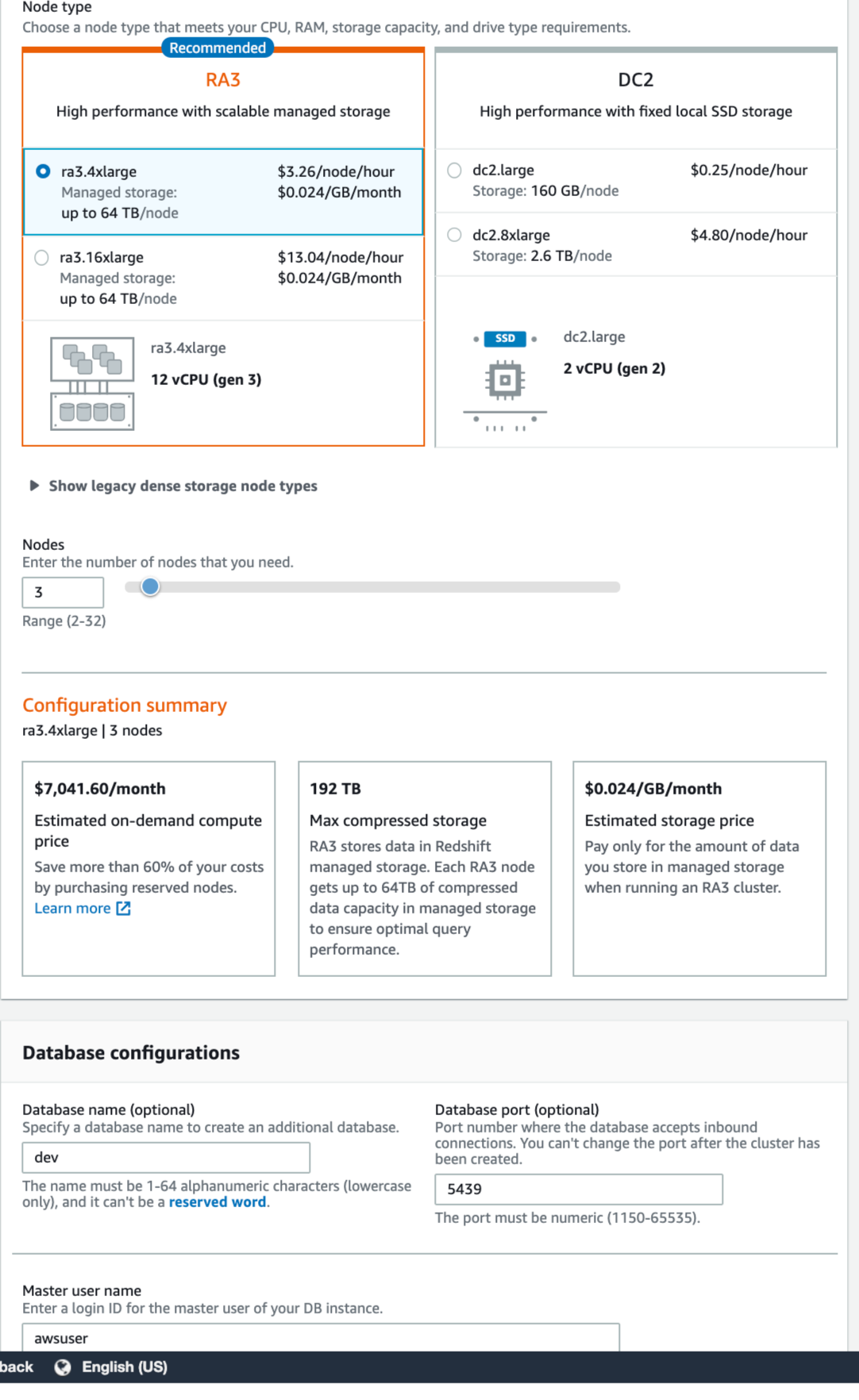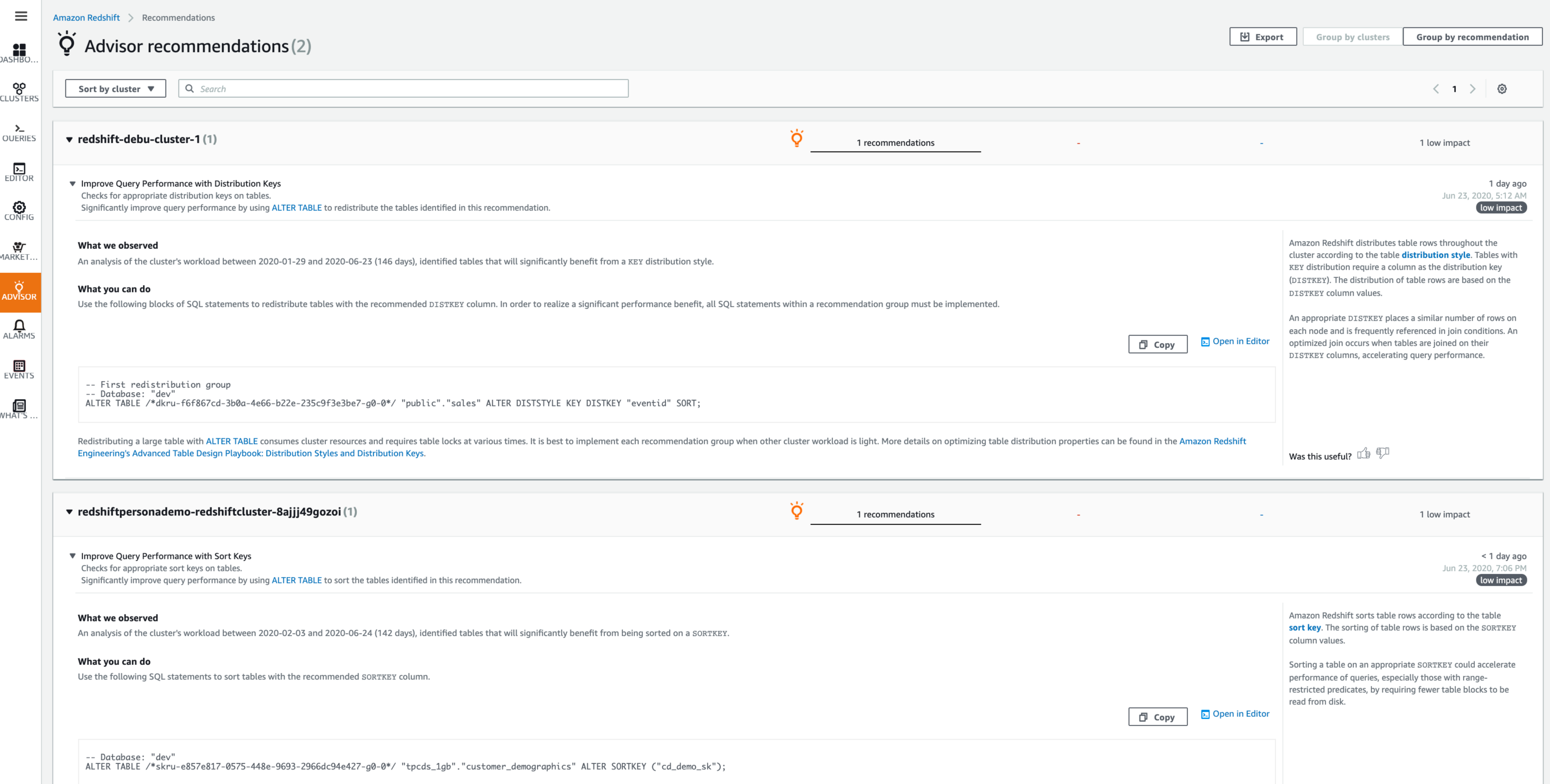Top Rated Amazon Redshift Alternatives
Video Reviews
399 Amazon Redshift Reviews
Overall Review Sentiment for Amazon Redshift
Log in to view review sentiment.

I appreciate the query optimization capabilities of Amazon Redshift, as it intelligently selects the most efficient execution plans, resulting in faster query performance and enabling swift analysis of large datasets. Review collected by and hosted on G2.com.
I dislike about Amazon Redshift is the requirement for meticulous planning and monitoring of their usage, as it is essential to consider factors such as data size, cluster size, and data transfer frequency to ensure optimal cost efficiency and minimise the risk of unexpected expenses Review collected by and hosted on G2.com.
according to understanding past 2 year i worked on it AWS Analytics offers scalable and flexible solutions for data analysis. Its cost efficient pay as you go model, seamless integration with other AWS services, and managed nature simplify workflows. Real-time capabilities, security features, and machine learning integration enhance its value for various use cases Review collected by and hosted on G2.com.
according to me in Aws Analytics Challenges with the complexity in tool selection and setup, learning curves for new users, careful cost monitoring, potential service and limited customization. Review collected by and hosted on G2.com.
Redshift has proven to be a very valuable database for us, keeping us satisfied for years. However, recently we have decided to shift to Databricks in order to get access to a better UI and more optionality around how we use our data. Review collected by and hosted on G2.com.
Redshift doesnt offer as many tools as other data warehouses, such as built in visualization or auto-ML tools. It is quite basic, but it still comes at a high price. Review collected by and hosted on G2.com.

It's data processing speed just in second we will get our output. 3times faster than other could platform. It helps me as developer to optimise performance of process Review collected by and hosted on G2.com.
Some time it's lack during high workload but overall performance is too good highly recommend Review collected by and hosted on G2.com.
Amazon Redshift is incredibly fast; we run a multinode cluster and can run aggregations on hundreds of millions of rows in a few seconds.
Amazon redshift is low-cost compared to competitors.
Amazon Redshift is horizontally scalable; you can add more nodes to handle additional workloads.
It is easy to manage as Redshift is based on SQL, and the amazon redshift query engine has the same interface as PostgreSQL. Review collected by and hosted on G2.com.
We are using Amazon Redshift as a data warehouse solution to handle petabytes of data and did not see many issues so far. Review collected by and hosted on G2.com.

Amazon Redshift is one of best Data warehousing tool offer by AWS and it give real time data analytics and allows quickly run complex queries on large amount of data, that's why it provides the real- time insights helps to make great decision. Review collected by and hosted on G2.com.
Nothing i dislike about the AWS Redshift. Review collected by and hosted on G2.com.

One of the most beneficial aspects of Amazon Redshift is its scalability, which allows users to store and analyze large amounts of data quickly. It also offers a cost-effective solution compared to traditional data warehousing options.
Here are some upsides of using Amazon Redshift:
1. Scalability: Amazon Redshift is designed to handle massive amounts of data and can scale up or down quickly to meet changing demands.
2. Affordability: With Amazon Redshift, users only pay for what they use, making it a cost-effective option for organizations of all sizes.
3. Integration with other AWS services: Amazon Redshift integrates seamlessly with other AWS services, making it easy to move data between services for analysis.
4. Security: Amazon Redshift offers a range of security features, such as encryption at rest and in transit and access control mechanisms to ensure that data is protected.
5. Ease of use: Amazon Redshift is user-friendly and easy to set up and use, even for users with limited technical expertise.
6. Customizability: Amazon Redshift allows users to customize their data warehousing environment to meet their specific needs, including the ability to create custom SQL functions and user-defined types.
Overall, Amazon Redshift is a versatile and powerful data warehousing solution that offers a range of benefits to users, including scalability, affordability, ease of use, and security. Review collected by and hosted on G2.com.
While Amazon Redshift has many benefits, there are also some potential downsides to using the service. Here are a few examples:
1. Limited SQL support: Amazon Redshift has some limitations regarding SQL support, such as lacking support for advanced SQL features. This may be a drawback for users with complex data warehousing needs.
2. Complex setup: While Amazon Redshift is generally user-friendly, setting up and configuring the service can be difficult and time-consuming, especially for users with limited technical expertise.
3. Query performance: In some cases, query performance can be slower than other data warehousing solutions, especially when dealing with complex queries or large datasets.
4. Data ingestion: While Amazon Redshift integrates well with other AWS services, ingesting data from external sources can be complex and time-consuming.
5. Cost: While Amazon Redshift can be cost-effective compared to traditional data warehousing options, it can still be expensive for users with large datasets or high query volumes.
Overall, while Amazon Redshift is a powerful and flexible data warehousing solution, users should carefully consider their needs and the potential downsides before choosing the service. It may not be the best fit for all users, especially those with highly complex data warehousing requirements. Review collected by and hosted on G2.com.


1. Easy to implement or set up on-premise
2. AWS console is very quick in querying tables
3. Easy to upload data
4. Give user to deep dive into insights as it is compatible with many visualization tools Review collected by and hosted on G2.com.
1. Training documentation is not so detailed
2. Learning requires at least a month of time
3. Price is a bit high as compared to other providers
4. Debugging is a quite annoying Review collected by and hosted on G2.com.

I have been using Amazon Redshift for a while now, and I have to say that I am very impressed with its performance and reliability. The speed and scalability of this cloud-based data warehousing solution are unmatched, and it has allowed me to process and analyze large amounts of data quickly and efficiently. There are no problems at all if you are transitioning from other solutions in terms of T-SQL. Review collected by and hosted on G2.com.
I haven't found any dislikes regarding Amazon Redshift, but a few things could be more manageable depending on the client you use for querying the database. I've found some issues with schemas updates and synchronization. Review collected by and hosted on G2.com.











